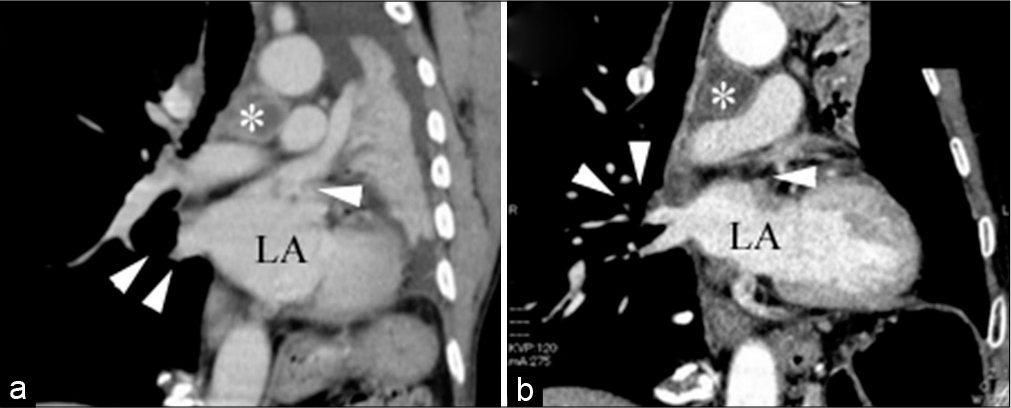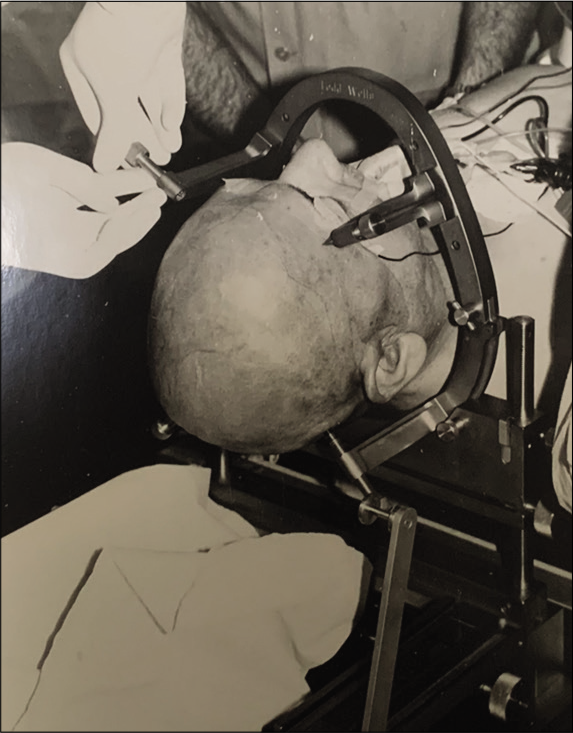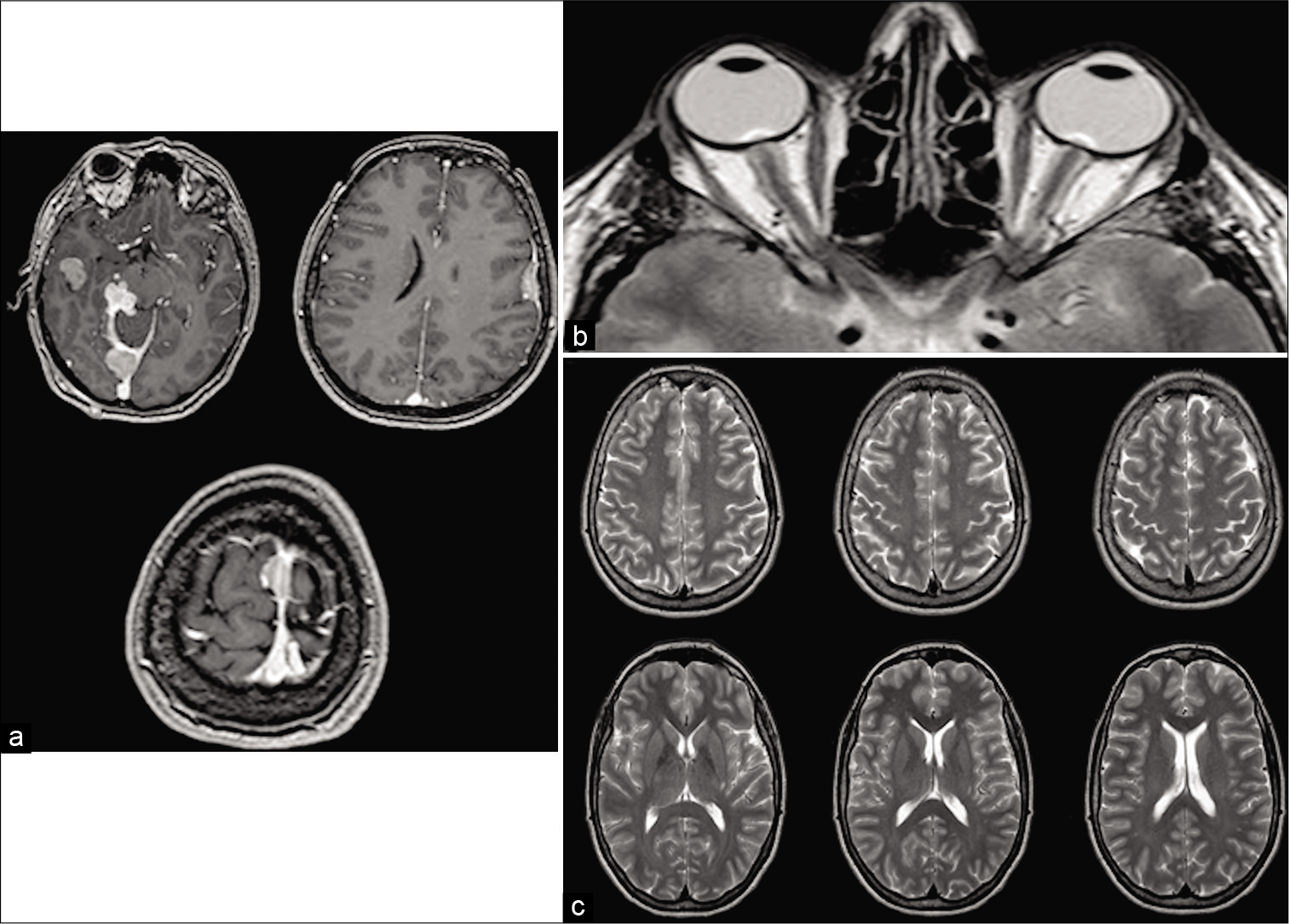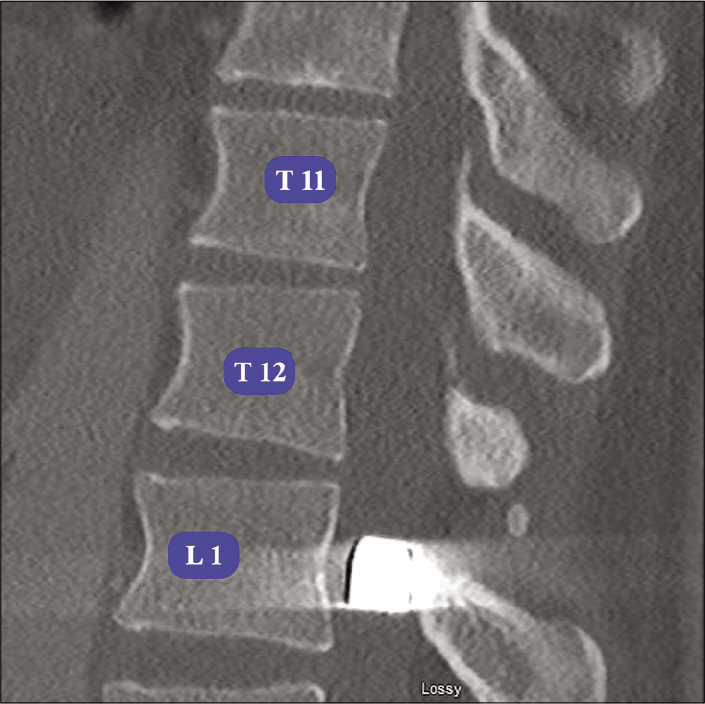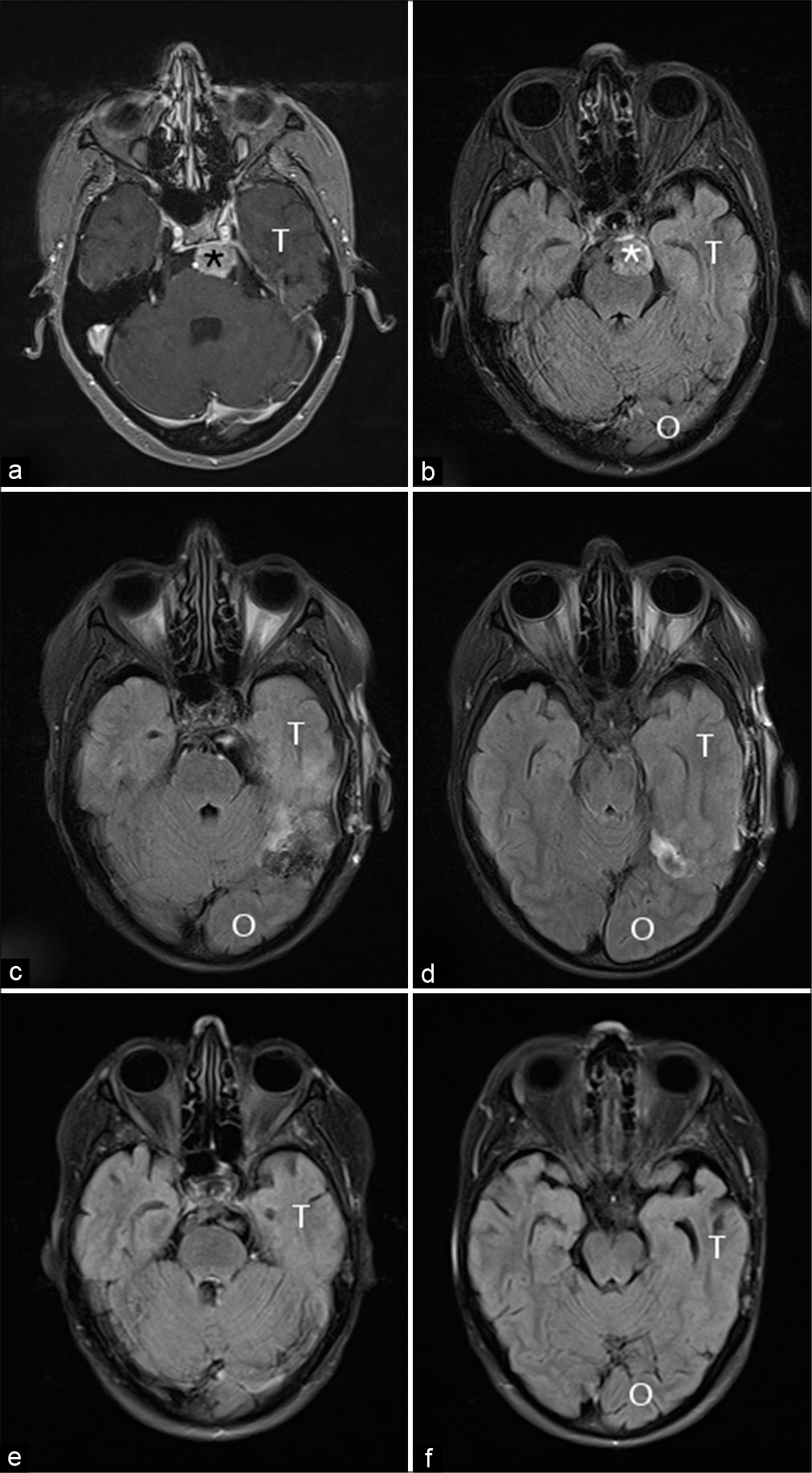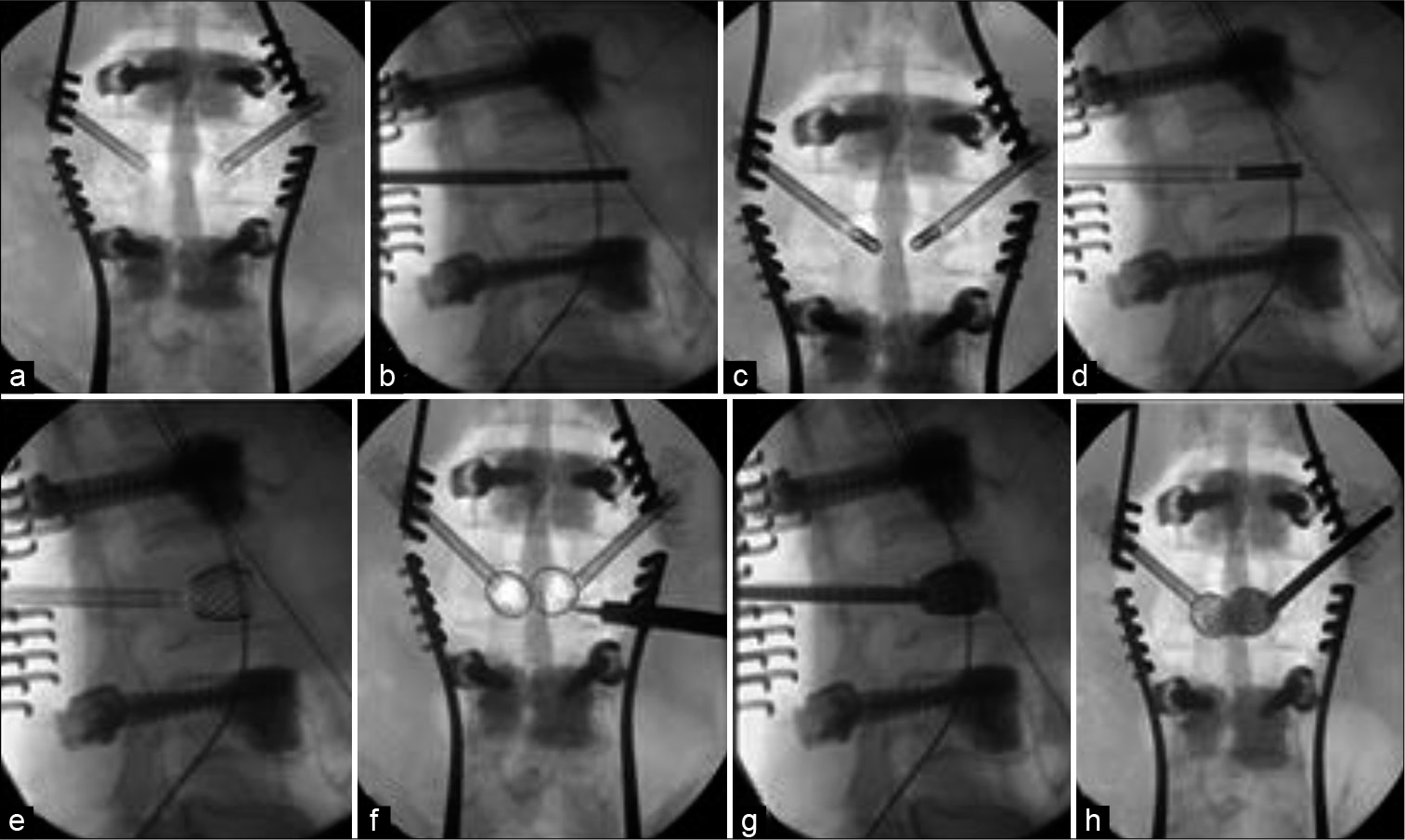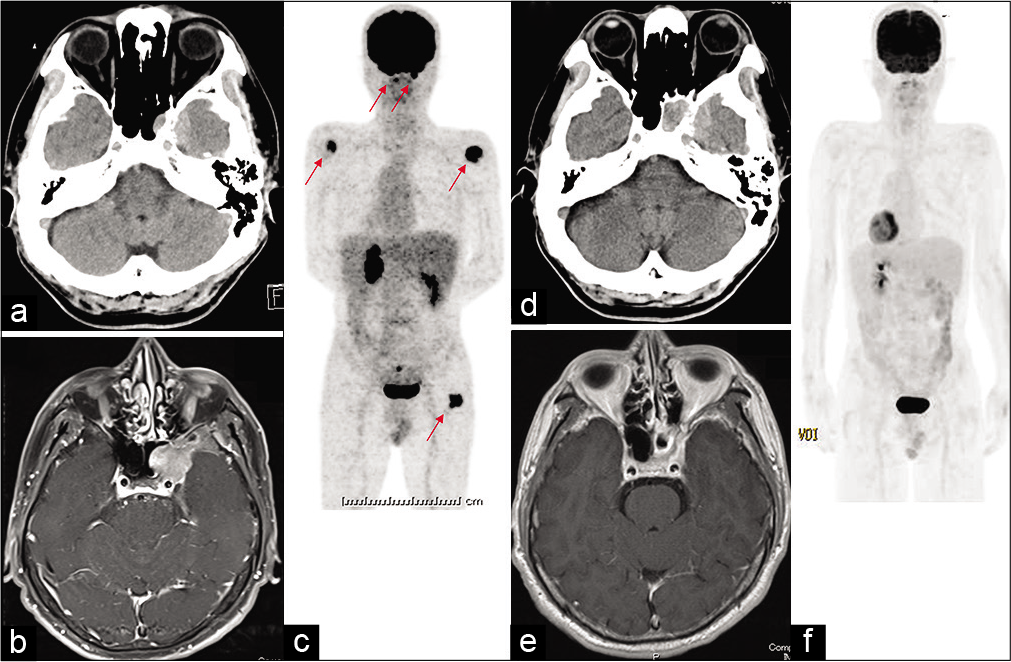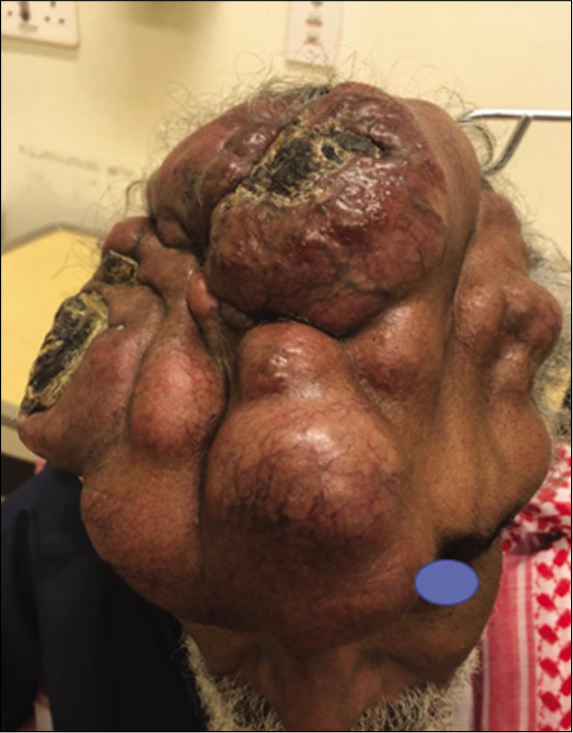A case of cerebral infarction due to pleomorphic carcinoma of the lung
Date of publication: 01-Aug-2020
Background: With the increase in endovascular treatment, reports of embolism other than thrombus are scattered, but intracranial tumorigenic embolism is rare and difficult to diagnose. Here, we describe a case of a tumorigenic embolism in a patient with lung cancer whose invasion into the vascular system was not detected on preoperative whole-body imaging.
Symptomatic intracranial hemorrhages and frame-based stereotactic brain biopsy
Date of publication: 01-Aug-2020
Background: Stereotactic biopsy is a well-established procedure in neurosurgery. Our objective is to define the clinical, radiological, and technical factors that can condition the emergence of postbiopsy symptomatic intracranial hemorrhage. Based on our findings, we suggest recommendations to improve its usual clinical practice.
Slit-like hypertensive hydrocephalus: Report of a late, complex, and multifactorial complication in an oncologic patient
Date of publication: 01-Aug-2020
Background: Several sophisticated techniques and many chemotherapy drugs have improved life expectancy of oncologic patients allowing us to observe late complications which present many years after the initial treatment.
Resolution of cauda equina syndrome after surgical extraction of lumbar intrathecal bullet
Date of publication: 25-Jul-2020
Background: Gunshot wound (GSW) injuries to the spinal column are correlated with potentially severe neurological damage. Here, we describe a GSW to the thoracolumbar junction (e.g., T12/L1 level) which resulted in a cauda equina syndrome that resolved once the bullet was removed.
Comment: Cervical epidural neurosarcoidosis – A case report and literature review
Date of publication: 25-Jul-2020
A case of aphasia due to temporobasal edema: Contemporary models of language anatomy are clinically relevant
Date of publication: 25-Jul-2020
Background: Understanding the anatomy of language in the human brain is crucial for neurosurgical decision making and complication avoidance. The traditional anatomical models of human language, relying on relatively simple and rigid concepts of brain connectivity, cannot explain all clinical observations. The clinical case reported here illustrates the relevance of more recent concepts of language networks involving white matter tracts and their connections.
Brain aspergilloma in an immunocompetent individual: A case report
Date of publication: 25-Jul-2020
Background: Aspergillosis is caused by fungi from the Aspergillus species, mainly Aspergillus fumigatus. Patients with aspergillosis typically have an underlying immunosuppression, and it is rare within the central nervous system (CNS) in an immunocompetent host. The mortality rate is as high as 90% if untreated, and the diagnosis is usually delayed due to nonspecific clinical presentation. This study described a case of CNS aspergillosis in an immunocompetent patient, through which we sought to discuss the current knowledge regarding brain Aspergillus focusing in the immunocompetent host.
Vertebral body cemented stents combined with posterior stabilization in the surgical treatment of metastatic spinal cord compression of the thoracolumbar spine
Date of publication: 25-Jul-2020
Background: Extensile interventions to provide anterior spinal column support in metastatic spinal cord compression (MSCC) surgery incur added morbidity in this surgically frail group of patients. We present our preliminary results of posterior spinal decompression and stabilization coupled with vertebral body cemented stents for anterior column support in MSCC.
Diffuse large B-cell lymphoma in the sphenoid sinus: A case report and review of literature
Date of publication: 25-Jul-2020
Background: Non-Hodgkin lymphomas (NHLs) in paranasal sinus are uncommon, accounting for 0.17–2% of all NHL cases; it is especially rare in the sphenoid sinus. In this report, we describe a case of NHL in the sphenoid sinus.
Massive Secondary Cutaneous Meningioma with Extension to the Face
Date of publication: 25-Jul-2020
Background: Cutaneous meningioma is a very uncommon pathologic entity that can be divided into primary and secondary types. Secondary cutaneous meningioma arises from an intracranial meningioma through metastasis, seeding during surgery, or direct bone invasion. There are limited published case reports correlating the development of cutaneous meningioma to high-grade convexity meningioma.


